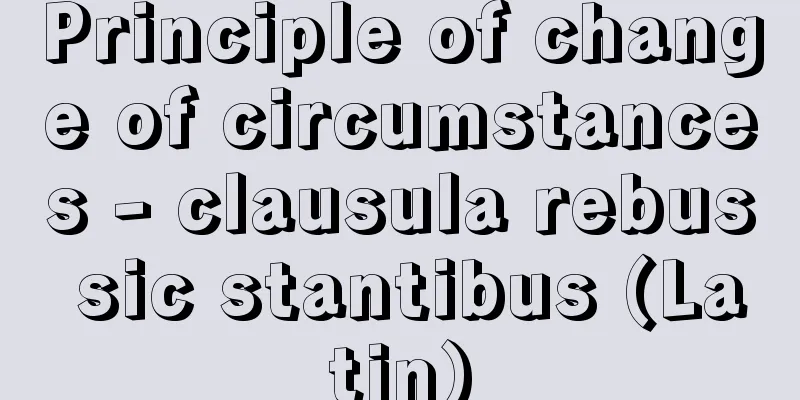Mine Safety Law

|
This law stipulates the basic matters concerning mine safety. Law No. 70 of 1949. Its purpose is to prevent harm to miners, prevent mining pollution, and promote rational development of mineral resources. From the Edo period to the early Meiji period, Japan's mining legislation was aimed at maintaining public order by suppressing rebellions by miners, but in 1890 (Meiji 23), the Mining Ordinance was enacted, and regulations concerning mine safety were established for the first time under the name of the Mining Police. In 1905 (Meiji 38), the Mining Ordinance was abolished and the Mining Law was enacted, but since then, mine safety has been regulated by the Mining Law and the Mining Police Regulations based on it. In order to address the deterioration of safety due to the destruction of mining facilities as a result of the excessive mining during World War II, the Mine Safety Law was enacted to replace the Mining Law. In this law, "safety" refers to the prevention of harm to people in mines (including sanitary ventilation and rescue in times of disaster), protection of mineral resources, preservation of mine facilities, and prevention of mine damage. The Mine Safety Law (1) imposes the obligation to observe safety on mining rights holders and mine workers, and (2) orders mining rights holders to appoint a safety manager and safety technical staff, establish a safety committee, and establish safety regulations as part of their safety management system, orders the appointment of safety inspectors and assistant safety inspectors as safety supervision organizations, and sets up the Nuclear and Industrial Safety Agency (Mine Safety Division) in the Ministry of Economy, Trade and Industry as a safety supervision agency, and Mine Safety Supervision Departments and Mine Safety Supervision Offices as local branch offices, thereby laying out the outline of mine safety supervision. [Saburo Miyata] [Reference] | |Source: Shogakukan Encyclopedia Nipponica About Encyclopedia Nipponica Information | Legend |
|
鉱山の保安に関する基本的事項を定めた法律。昭和24年法律第70号。鉱山労働者に対する危害を防止するとともに鉱害を防止し、鉱物資源の合理的開発を図ることを目的とする。日本の鉱業法制は、江戸時代から明治初期まで、鉱山労働者の反抗を禁圧する治安維持を目的とするものであったが、1890年(明治23)に「鉱業条例」が制定され、鉱業警察の名のもとに鉱山保安に関する規定が初めて設けられた。1905年(明治38)鉱業条例が廃止され、鉱業法が制定されたが、以後の鉱山保安に関する取締りは鉱業法およびこれに基づく鉱業警察規制によって行われた。第二次世界大戦中の鉱山乱掘の結果、鉱業施設の荒廃による保安状況の悪化に対処するため、鉱業法にかわるものとして鉱山保安法が制定された。 この法律にいう「保安」とは、鉱山における人に対する危害の防止(衛生に関する通気および災害時における救護を含む)、鉱物資源の保護、鉱山の施設の保全、鉱害の防止である。鉱山保安法では、(1)鉱業権者と鉱山労働者に保安遵守義務を課し、(2)鉱業権者に保安管理制度として、保安統括者と保安技術職員の選任、保安委員会の設置、保安規程の制定を命じ、保安監督機構として、保安監督員、保安監督補佐員の選任を命じ、保安監督機関として、経済産業省に置かれた原子力安全・保安院(鉱山保安課)、地方の出先機関として鉱山保安監督部および鉱山保安監督事務所を設けることなど、鉱山保安の取締りに関する大綱を定めている。 [宮田三郎] [参照項目] | |出典 小学館 日本大百科全書(ニッポニカ)日本大百科全書(ニッポニカ)について 情報 | 凡例 |
<<: Public and private - Public and private
Recommend
Ichijima [town] - Ichijima
A former town in Hikami County, eastern Hyogo Pref...
Iwamatsu
A settlement of Uwajima City located in the southw...
Value analysis; VA
Cost reduction involves analyzing and examining th...
Tort - illegal act
When a certain act results in liability to compen...
Martes foina (English spelling)
…[Yoshiharu Imaizumi]. … *Some of the terminology...
Gouges - Olympe de Gouges
A pioneer of women's liberation active in Par...
Organologie
...This theory was very popular in Europe and the...
Emergency Order - Emergency Order
Under a parliamentary system, an order is issued ...
Inserted mole - Inserted mole
…Body decoration and transformation [Hiroko Yokoy...
Kuro Hosho
Noh actor. The nickname of the head of the Hosho ...
Cénesthopathie (English spelling)
…It is a condition in which the sense of the body...
Aster scaber
…[Hiroji Koyama]. . … *Some of the terminology th...
Ionization
(1) This refers to the dissociation of an electro...
Ogata Sohaku
...A painter from the mid-Edo period. His given n...
mélodie (English spelling)
…A form of vocal music that is relatively small a...









